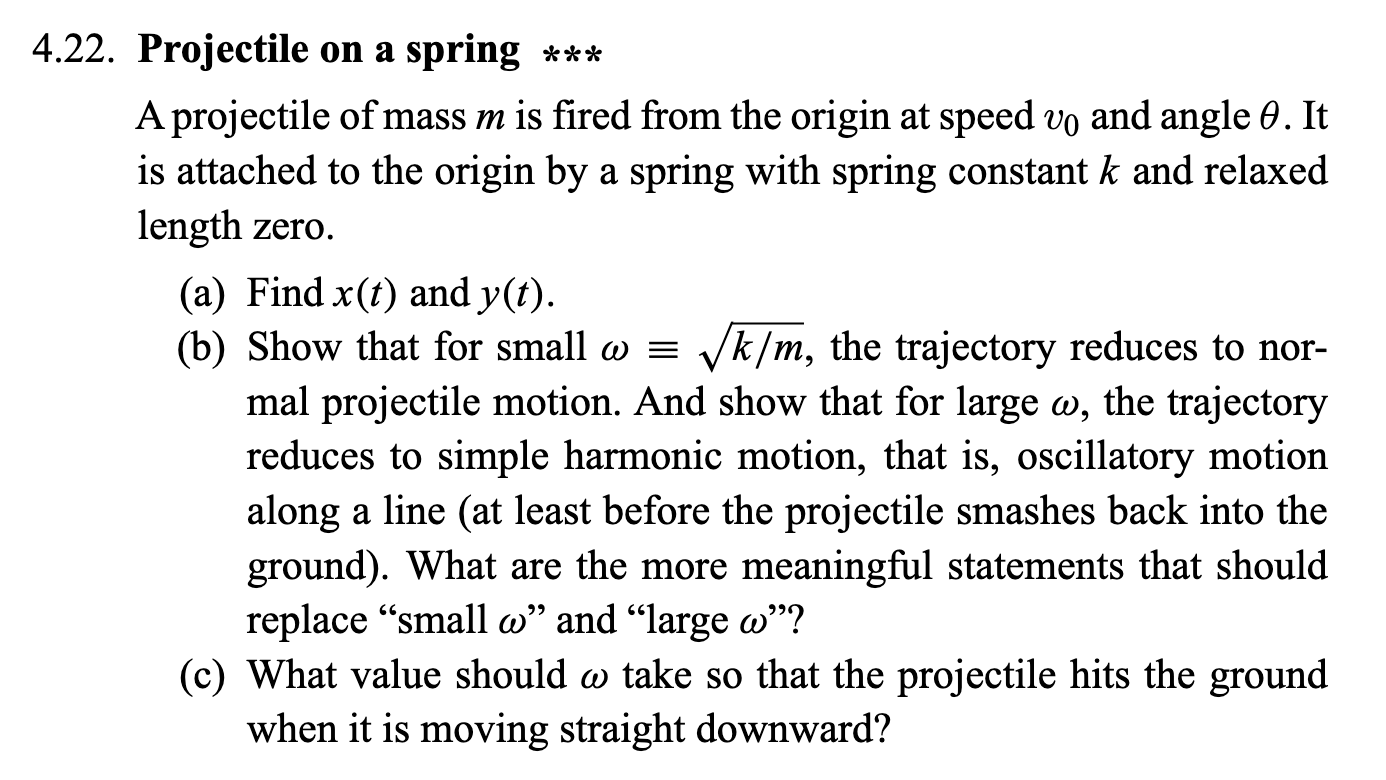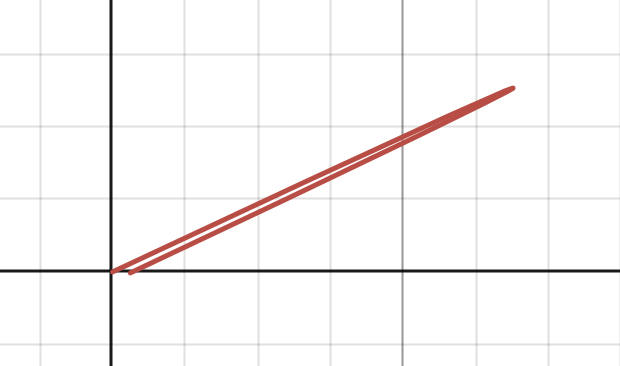4.22

Part (a)
The equations are
In the and directions respectively.
Let . Then, . Thus,
where . This is a standard differential equation. Since we are given the initial position and velocity, it is beneficial to write the solution in this form:
Plugging in the initial conditions of and , we get
Similarly, in the direction, we have
Plugging in the initial conditions of and , we get
The trajectory looks elliptical:

Part (b)
If , we can use the small angle approximations, namely and .
These equations describe vanilla projectile motion. As stated initially, these approximations are only valid when . If only we concern ourselves with the motion of the particle when it is airborne, attains its maximum value right before the particle hits the ground, which is . Thus, if , it follows that for all values of (before the particle hits the ground, of course). So, would ensure that the small angle approximations are valid.
We notice that can be rewritten like so:
If we somehow get the first term to vanish, the trajectory is reduced to a straight line with slope .

For this to happen, the first term must become negligibly small as compared to the second term. So,
Part (c)
We want when .
Plugging into , we get
4.29

is defined in 4.33 like so:
On taking the derivatives of the expression inside the square root with respect to , we get
On setting the first derivative of equal to ,
we get the critical points to be and .
On evaluating the second derivative at these points, we get and respectively. Thus, if , achieves a minima at . If , achieves a minima at .
If , we continue to take derivatives till we reach a non zero derivative:
Since is even and is positive, we can conclude from the higher order derivative test that is a minima.